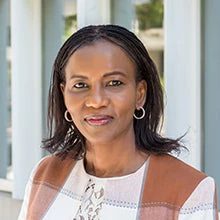 A pineapple farmer in the Mindanao region of the Philippines.
A pineapple farmer in the Mindanao region of the Philippines.
Consider this: In certain parts of the Philippines, gross domestic product (GDP) per capita is similar to that of low-income, fragile, conflict and violence (FCV)-affected countries such as the Democratic Republic of Congo or Liberia. Fragility is sometimes present at the national level but can also be found subnationally, in otherwise relatively stable and functioning states . This fragility is often overlooked as national economic growth continues to rise, making it even more persistent, causing immense suffering and driving people into poverty.
A new report by the World Bank shows that FCV does not only affect the world’s poorest countries. Over the past decade, more people have been killed from political violence in middle-income countries than in low-income ones . Deaths from subnational conflicts in middle-income countries (71,068) are more than twice those in low-income countries (31,166) in the last decade. Finding ways to work more effectively on FCV in middle-income countries is key for the World Bank and other development agencies.
The report Fragility, Conflict, and Violence in Middle-Income Countries sets out for the first time the scale of conflict and violence in middle-income countries. It finds that between 2010 and 2019, a total of 506,254 people were killed from political violence in middle-income countries, compared to 357,754 in low-income countries (Figure 1). While not included in the period covered by the report, Ukraine demonstrates once again that MICs all over the world are at risk of violent conflict.
A large share of this violence comes from the civil war in Syria, a country which held middle-income status until recent years. However, many other middle-income countries experience widespread violence. Of the 15 countries with the highest average deaths per capita from political violence, eight are middle-income. Political violence takes a wide range of forms including national civil wars, nonstate conflicts, and subnational conflicts. Many relatively stable and prosperous middle-income countries have subnational areas of conflict and fragility.
Progress but challenges
Over the past decade, there has been a step change in the World Bank’s thinking on working on FCV in middle-income countries. The 2011 World Development Report on Conflict, Security, and Development highlighted the potential for severe fragility and violence in parts of countries that are not considered to be fragile or conflict-affected. An assessment by the Independent Evaluation Group (IEG) of the World Bank’s Engagements in Situations of Conflict in 2021 noted that the development community’s perception that conflict and violence were predominantly low-income issues was not accurate. The 2018 UN-World Bank joint report, Pathways for Peace, emphasized that “today’s deadliest and most complex conflicts are occurring in middle-income countries, underscoring the fact that income and wealth are not a guarantee of peace.” Most recently, the World Bank Group Strategy for FCV (2020–25) recognized that “the global fragility landscape has worsened in recent years, impacting both low and middle-income countries.”
How has this translated into action on the ground? The report finds that much progress had been made. The World Bank has been working on FCV issues in a wide range of middle-income countries with an increasing focus on addressing the impacts of conflict and violence such as refugee inflows.
The report undertook several country case studies and examined the challenges that have at times limited the effectiveness of the Bank’s work in these contexts. These include a relative lack of concessional and grant financing in middle-income countries, which has sometimes reduced the incentives for middle-income governments to borrow for work on difficult FCV issues. In many high-capacity middle-income countries, some conflict-affected subnational areas show high levels of fragility impacting project implementation and final outcomes. There has oftentimes been a gap in diagnostics, with Risk and Resilience Assessments not mandatory for countries not on the list of Fragile and Conflict-Affected Situations. World Bank country strategies represent an opportunity to further deepen our focus on the FCV agenda.
Despite the challenges, the report found that progress has been made. Resources from trust funds such as the State and Peacebuilding Fund and Global Concessional Financing Facility (GCFF) have supported innovative analytics and pilot projects, some of which have been scaled up. In a number of countries, World Bank country directors and managers have supported long-term engagement so that when windows of opportunity have arisen, the World Bank has been well placed to provide support. Peace agreements and large-scale refugee inflows have created opportunities for deeper World Bank engagement on FCV issues.
The agenda moving forward
The challenge now is to learn the lessons from past engagement in developing the next generation of projects working on FCV in middle-income countries. The report lays out options for how the World Bank and other development agencies can work more effectively on middle-income countries. At the strategic level, these include exploring avenues for providing concessional financing, ensuring country strategies lead to more focused work on FCV, scaling up the attention on fragile subnational regions in country strategies, and enhancing FCV expertise in middle-income country offices. This will require experimentation, innovation, and continuing commitment. Much remains to be done.



Join the Conversation